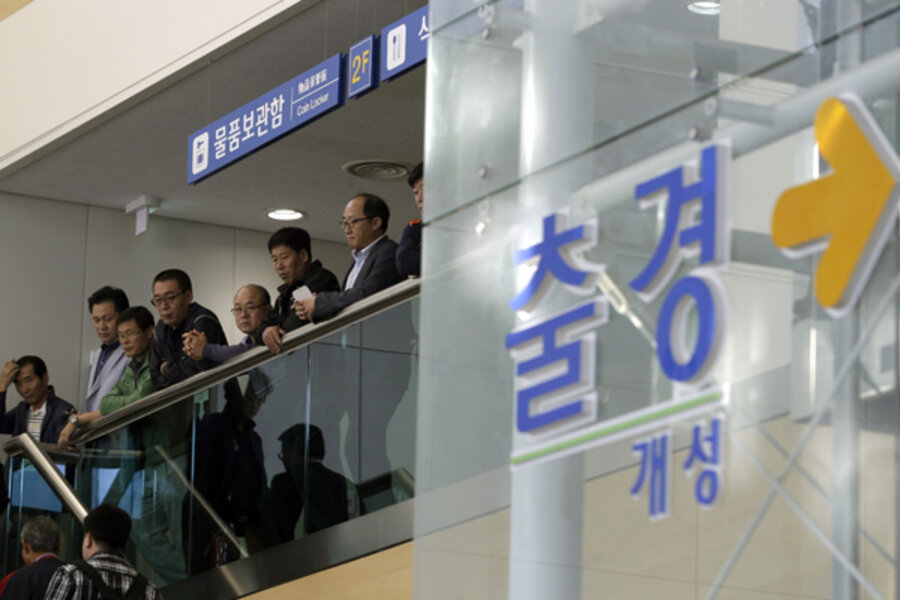South Koreans head back to work in reclusive North
Loading...
| Seoul, South Korea
Today the Kaesong Industrial Complex, a subject of protracted attention this spring, was reopened for a trial run after a five-month shutdown – a sign that North Korea may be turning more attention to developing its weak economy.
South Korean businessmen are assessing factory facilities and determine what maintenance or repairs are needed before regular operations can be resumed. This morning 820 South Korean managers entered the jointly operated industrial park, which is about 10 miles into North Korea.
The jointly operated industrial park was shut in April, a time of exceptionally high inter-Korean tensions and nuclear bluster, when North Korea suddenly refused to allow South Korean businessmen access to their factories, and pulled out its own 53,000 workers. North Korea said its decision to close the complex was motivated by South Korean politicians who made comments that offended the dignity of North Korea.
The tentative reopening Monday is the result of lengthy negotiations. On Aug. 29, the two sides agreed to a five-point accord toward reopening the complex. It’s in North Korea’s interest to get the industrial park functioning if it is to improve its economy, analysts say.
“The Kaesong complex is still a significant portion of the North Korean economy, so they have ample reason to want to develop it,” says Kim Yeon-chul, professor of unification studies at Inje University. “They also need economic exchange with the South, and reopening the complex prevents a permanent disconnect between them,” he says.
Some analysts argue that the Kaesong complex is being used as leverage to secure more aid from the outside world.
“North Korea has now conditioned the South to be grateful for even the smallest things they grant. Just by reopening the complex, they can appear conciliatory,” says Sung-yoon Lee, assistant professor of Korean studies at Tufts University's Fletcher School of Law and Diplomacy.
One of the conditions of the agreement between the North and the South to reopen the industrial park is the “internationalization” of the complex. This would mean bringing the complex’s operations up to international standards and courting foreign investors.
North Korea has almost no domestic market: Economic development generally has to involve the outside world. At the same time, the North is not an attractive investment option for most companies because of the lack of safeguards for foreign investors and the fact that it is impossible under North Korean law to own any assets in the country.
“For the most part, it’s just a few Chinese investors who are willing to invest in North Korea. Having the complex sitting closed sends a negative message to them or any other investors so there’s a chance North Korea could now attract some investment,” Professor Kim says.
But the ability of any foreign companies to invest in North Korea is limited by international sanctions.
Before it was shut in April, some 123 South Korean companies operated at the industrial park. Kaesong opened in 2004 at a time of friendlier inter-Korean relations.
It was conceived of as a way of matching South Korean manufacturers with workers who earned low wages by international standards, but that are high wages in North Korea. In 2012, $470 million worth of goods were produced at the complex and $80 million was paid in workers’ wages according to data from the Ministry of Unification, South Korea’s official body responsible for exchanges with the North, The wages are paid directly to North Korea, which takes an unknown amount and gives the rest to the workers.






